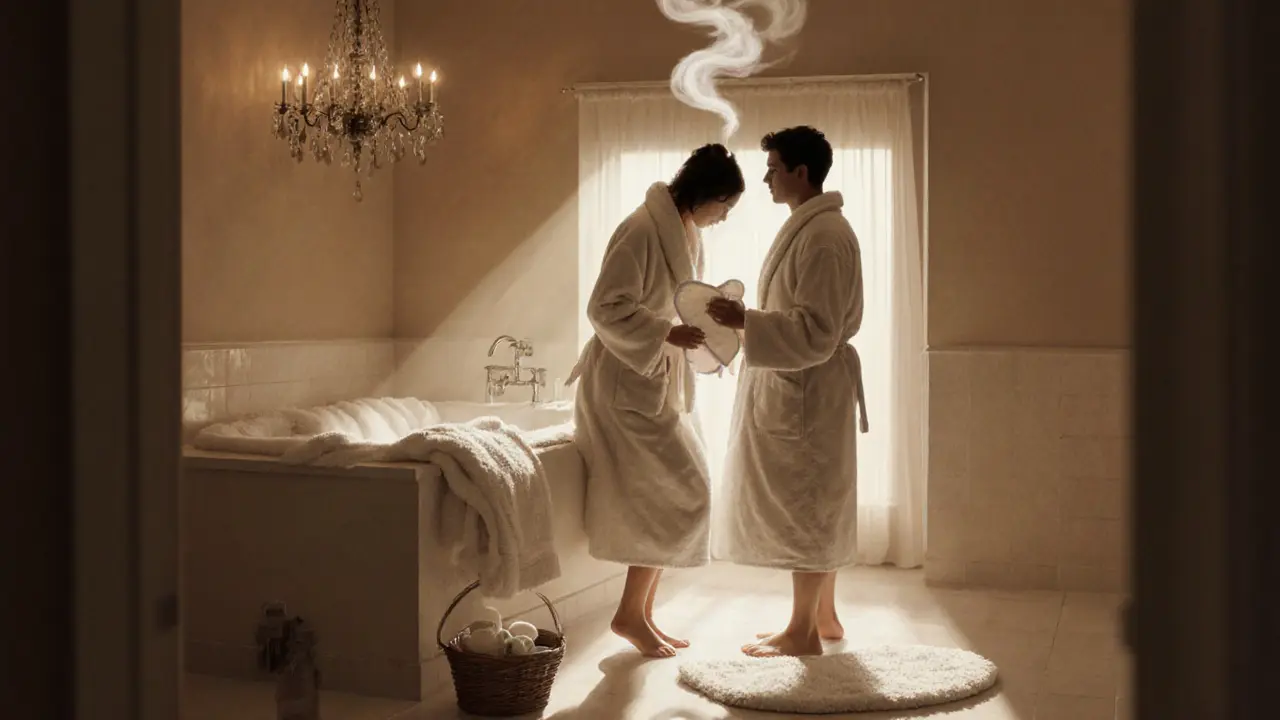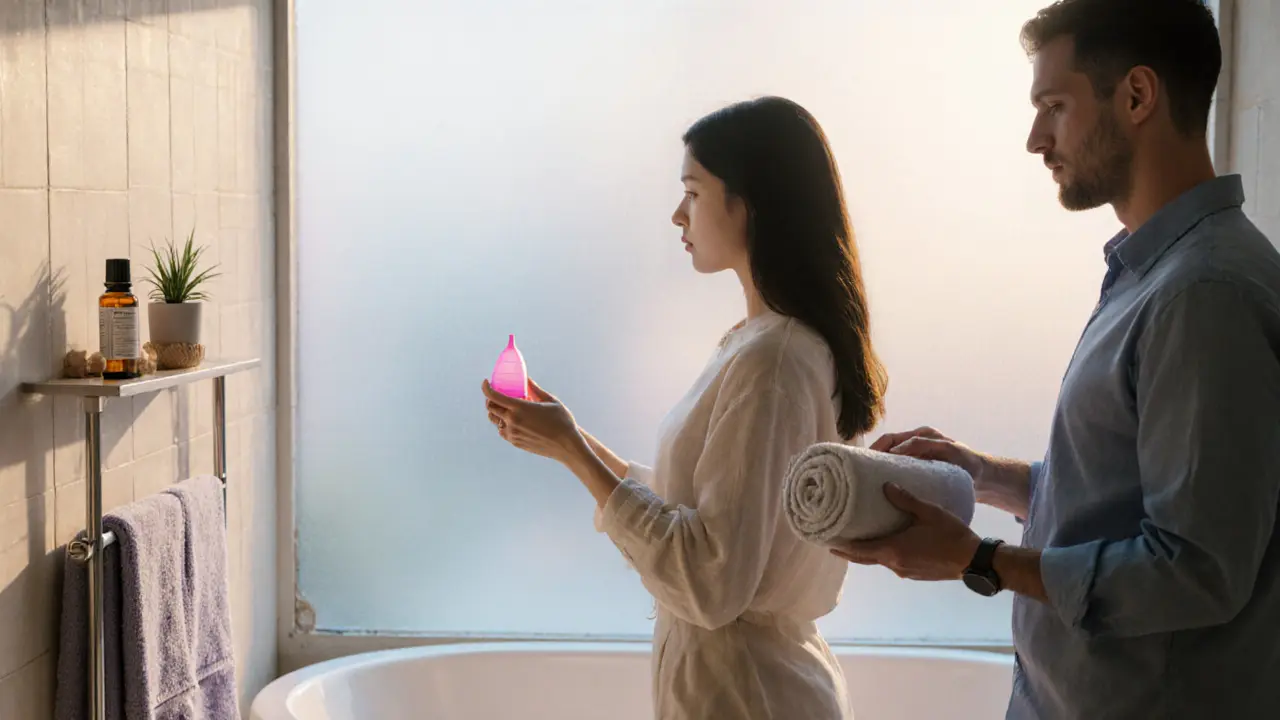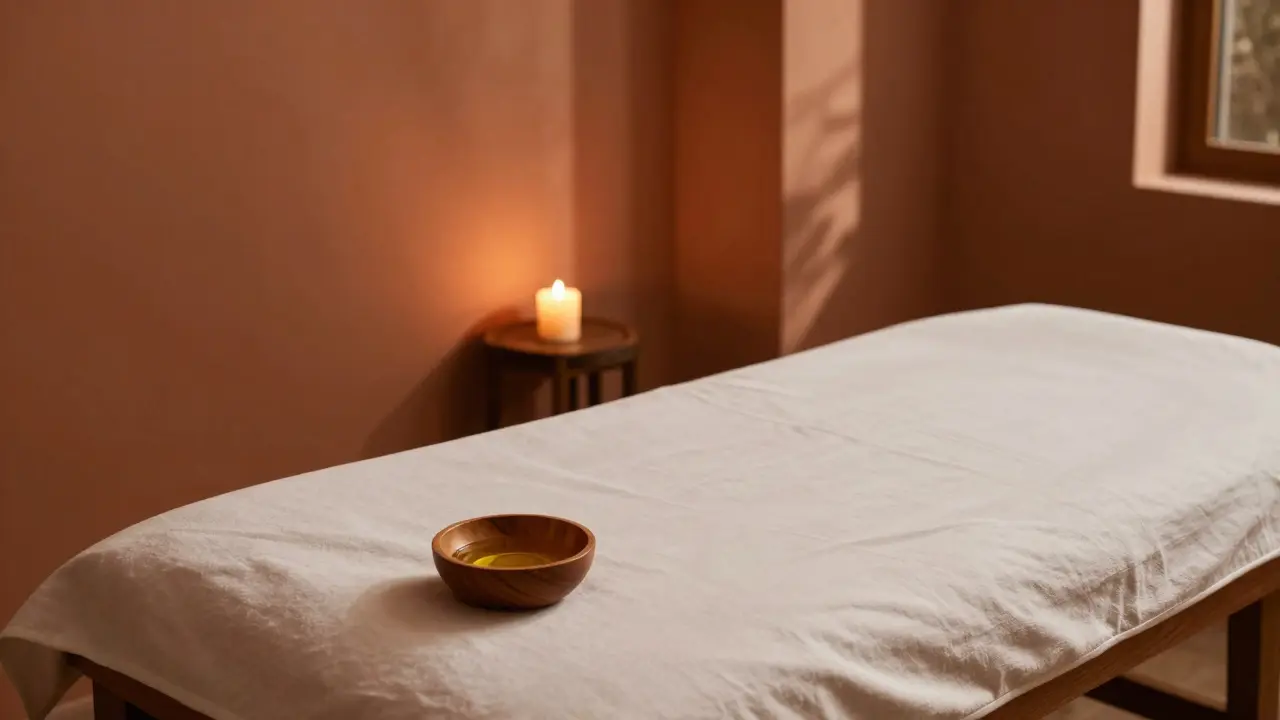bathing with a period might feel awkward at first, but it’s a question many couples wonder about. Below you’ll find clear answers on health, hygiene, consent and practical tips so you can decide what feels right for you both.
Understanding the Basics of Bathing During a Period
Origins and History
Throughout history, cultures have had varied views on menstruation and shared water spaces. In many traditional societies, women were barred from communal baths, while others celebrated the ritual as a rite of passage. Modern medicine, however, focuses on the biological facts rather than myths.
Core Principles or Components
When we talk about Menstruation is the monthly shedding of the uterine lining, typically lasting 3‑7 days. The key components to consider during a shared bath are Hygiene (keeping the skin and water clean), Consent (ensuring both partners are comfortable) and Skin health (watching for irritation).
How It Differs from Regular Bathing
Most of the routine stays the same-soap, water temperature, and relaxation-but there are a few extra steps, like choosing the right Period products (tampons, menstrual cups, or silicone liners) that work underwater, and being mindful of Infection risk (avoiding prolonged exposure to warm, stagnant water).
| Aspect | During Period | Not During Period |
|---|---|---|
| Product Choice | Water‑friendly tampons, menstrual cups, or silicone liners | Any standard product |
| Hygiene Focus | Extra rinsing, change of product after bath | Standard rinsing |
| Comfort Concerns | Potential cramping, skin sensitivity | Typical comfort |
| Social Perception | Varies by culture, often misunderstood | Generally neutral |
Who Can Benefit from Shared Bathing
Couples seeking intimacy, parents wanting to teach healthy body awareness, and friends sharing a spa day can all benefit. The practice works best for those who are open about communication and have no medical restrictions such as heavy bleeding or active infections.
Benefits of Bathing Together During a Period
Relaxation and Stress Relief
Warm water eases menstrual cramps for many people. A shared bath can release endorphins, making both partners feel calmer.
Enhanced Emotional Connection
Showing support during a vulnerable time deepens trust. The intimate setting encourages honest conversation about body changes.
Improved Hygiene Awareness
Discussing how to stay clean while bathing encourages better personal hygiene habits for both partners.
| Benefit | Description | Impact |
|---|---|---|
| Cramp Relief | Heat relaxes uterine muscles | Reduced pain |
| Bonding | Shared vulnerable experience | Stronger relationship |
| Hygiene Skills | Learning proper clean‑up | Healthier routines |
Practical Everyday Takeaways
After the bath, both partners can dry off and change into fresh clothing, which reinforces the habit of clean transitions.
What to Expect When Bathing Together
Setting or Context
Choose a private space-home bathtub or a private spa suite. Warm water (around 36‑38°C) is ideal; too hot can worsen cramps.
Key Processes or Steps
- Discuss comfort levels beforehand.
- Insert a waterproof Menstrual cup or use a tampon designed for water activities.
- Enter the bath together, keeping the water level low enough to avoid overflow.
- Rinse gently; avoid vigorous scrubbing of the genital area.
- After the bath, exit, remove any inserted product, and change into clean clothes.
Customization Options
If cramping is severe, add a few drops of lavender oil (diluted) for relaxation. Some couples light scented candles for ambiance, but keep fragrance away from the water surface to avoid irritation.
Communication and Preparation
Ask open‑ended questions like, “How does the water feel for you?” and respect a “no” at any point. Preparation includes having extra towels and a fresh pad nearby just in case.

How to Practice Safely
Setting Up for Success
Clear the bathtub of toys or shampoo bottles, and ensure the drain is unclogged to keep water moving.
Choosing the Right Tools
Water‑proof menstrual cups (silicone, 30‑35mm diameter) work best. If you prefer tampons, pick the “sport” or “active” variation with a smooth applicator.
Step‑by‑Step Guide
- Talk about boundaries and decide on a product.
- Insert the chosen product before getting into the tub.
- Fill the tub with lukewarm water, add optional aromatherapy.
- Enter together, sit or lie down comfortably.
- Stay for 10‑20 minutes, focusing on breathing.
- Exit, rinse the genital area with fresh water, and remove the product.
- Dry off, use a fresh pad or panty liner, and relax.
Tips for Beginners or Couples
Start with a short 5‑minute soak to gauge comfort. Keep a heated pad nearby for post‑bath cramp relief. Remember, the goal isn’t a sexual act unless both explicitly agree.
Safety and Ethical Considerations
Choosing Qualified Resources
If you’re unsure about product choice, consult a gynecologist or a certified women's health educator.
Safety Practices
| Practice | Purpose | Example |
|---|---|---|
| Use waterproof product | Prevent leakage | Silicone menstrual cup |
| Keep water moving | Reduce bacterial growth | Run a gentle faucet |
| Maintain moderate temperature | Avoid worsening cramps | 36‑38°C water |
| Communicate continuously | Ensure consent | Ask “Is this okay?” |
Setting Boundaries
Agree on a safe word or gesture. If either person feels discomfort, stop immediately.
Contraindications or Risks
People with heavy bleeding, recent gynecological surgery, or active infections should avoid shared baths. Always check with a healthcare provider if uncertain.
Enhancing the Experience
Adding Complementary Practices
Combine the bath with gentle stretching or guided meditation to further ease cramps.
Collaborative or Solo Engagement
Solo baths can still be beneficial, but sharing the experience can boost emotional intimacy.
Using Tools or Props
Water‑friendly waterproof speakers let you play calming music without risking electronics.
Regular Engagement for Benefits
Even a short soak once a week can improve mood and reinforce healthy communication patterns.

Finding Resources or Experts
Researching Qualified Professionals
Look for certified pelvic health physiotherapists or certified women’s health coaches. Verify credentials on professional association websites.
Online Guides and Communities
Forums like Reddit’s r/periodtalk or health‑focused blogs provide real‑world tips.
Legal or Cultural Considerations
In some regions, public baths may have rules about menstruation. Private settings avoid these restrictions.
Resources for Continued Learning
Books such as “The Red Book” by Anita Johnson or video series from reputable health channels deepen understanding.
FAQ: Common Questions About Bathing During a Period
Is it hygienic to share a bathtub when she’s on her period?
Yes, as long as you use a waterproof menstrual product, keep the water clean, and change the product after the bath. The risk of infection is low when the water is not stagnant and both partners maintain normal hygiene.
What product works best for bathing?
Silicone menstrual cups or sport tampons designed for water activities are ideal because they seal well and don’t absorb water.
Can shared bathing relieve menstrual cramps?
Warm water can relax the uterus and reduce cramping for many people. Adding gentle stretching or aromatherapy may amplify the effect.
Are there any health risks?
The main concerns are potential irritation from prolonged exposure to warm water and a slight uptick in bacterial growth if the water isn’t changed. Using a clean tub, moderate temperature, and changing the menstrual product afterward mitigates these risks.
Is this appropriate in all cultures?
Cultural attitudes vary. Some societies still view menstruation as a taboo for shared water spaces, while others treat it as a normal bodily function. In private settings you can decide together what feels respectful and comfortable.
Conclusion: Why Trying a Shared Bath Can Be Worth It
A Path to Better Connection
Bathing together during a period can turn a routine hygiene task into a moment of shared care, easing physical discomfort and strengthening emotional bonds.
Try It Mindfully
Start with a short soak, keep communication open, and respect any sign of discomfort. If you have medical concerns, get a quick check‑in with a health professional.
Share Your Journey
Did you try a period bath? Drop a comment below or follow the blog for more practical relationship tips.
Disclaimer: Some links may be affiliate links, but all recommendations are based on research and quality.







Stephen Taliercio
October 9, 2025 AT 17:16Ever wonder why the tub manufacturers never mention the tiny sensors they embed in the plumbing? Some folks think it's just convenience, but I suspect they're gathering data on everything we soak in, even during a period. Keep an eye on the label and maybe go old‑school with a cast‑iron tub.
SHAHUL NAZEEM
October 11, 2025 AT 12:53Love the idea of sharing a soak, it’s like a tiny romance cruise! 🌊💞
Katelyn Stephens
October 13, 2025 AT 09:20It’s amazing how a simple bath can turn a crampy day into a bonding moment. Stick to the steps and you’ll both feel the relief and connection grow.
Mona Nona
October 15, 2025 AT 05:46OMG this is like the most intense thing ever!!! I can’t even… the water feels like a blanket of love and I’m scared it’ll melt my soul 😂😂😂. But seriously, don’t forget to bring extra towels or you’ll be soggy for life.
Mandeep Adhikari
October 17, 2025 AT 02:13Listen up: choose a waterproof menstrual cup that truly seals, otherwise you’re inviting leakage and embarrassment. Clean the tub before and after, set the temperature right, and communicate every second. No excuses, just a safe, respectful experience.
Alison Kilpe-Smith
October 19, 2025 AT 00:03Totally on board with the practical tips! I’d add that a quick stretch before getting in can amplify the cramp‑relief, and a lavender scent does wonders for the mood. Keep it chill and enjoy the moment.
Laurie Ralphs
October 20, 2025 AT 21:53I appreciate the cascade of advice that has already been laid out, yet there are several nuances that deserve deeper exploration. First, the water temperature must stay within a narrow therapeutic window; anything above 38°C can actually exacerbate uterine contractions, which defeats the purpose of seeking relief. Second, while many recommend silicone cups, the fit is highly individual and a mis‑fit can cause discomfort that feels like a miniature tidal wave inside the pelvis. Third, the importance of post‑bath hygiene cannot be overstated, because stagnant warm water is a breeding ground for opportunistic bacteria if the tub is not flushed. Fourth, consider the psychological dimension: sharing such an intimate ritual can dismantle lingering taboos, but only if both partners have explicitly affirmed consent without any hint of coercion. Fifth, the choice of ambient lighting plays a subtle role; soft, warm light reduces stress hormones, whereas harsh fluorescent bulbs can trigger tension. Sixth, a gentle steam infusion, achieved by adding a handful of crystal salts, can enhance circulation without compromising the integrity of the menstrual product. Seventh, remember to keep all electronic devices safely out of the water’s reach, as a short circuit could not only ruin equipment but also pose a shock hazard. Eighth, if either partner suffers from a history of yeast infections, it is prudent to discuss prophylactic measures beforehand to avoid flare‑ups. Ninth, the recommended duration of ten to twenty minutes is based on clinical observations of optimal heat exposure without over‑saturation of the skin. Tenth, after exiting the tub, a brief period of dry‑heat, such as a heating pad, can extend the analgesic effects of the warm soak. Eleventh, always have a fresh pad or liner within arm’s reach; this prepares you for the inevitable transition to regular attire. Twelfth, maintain a dialogue throughout the session; a simple “how’s that feeling?” works better than any scripted script. Thirteenth, if you notice any unusual odor or discoloration of the water, discontinue the session immediately and consult a health professional. Fourteenth, share your experience with a trusted community, because peer feedback often uncovers hidden tips that formal guides miss. Finally, approach the whole practice with a sense of curiosity and mutual respect, and you’ll discover that a shared bath can become a powerful ritual of care and connection. 😊
Anwen Caedmon
October 22, 2025 AT 19:43Oh great, another 16‑step manual for something you can do in five minutes. As if we needed a PhD in tub‑science to avoid a splashh. 🙄
ANDRES BELLO GARCIA
October 24, 2025 AT 17:33Good point about checking the tub. Simple cleaning goes a long way.